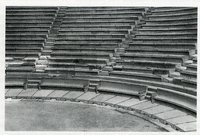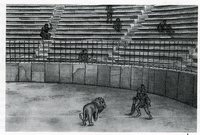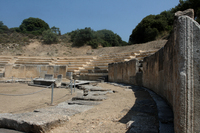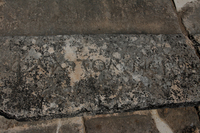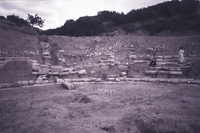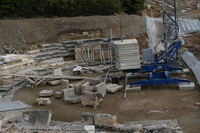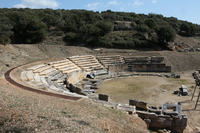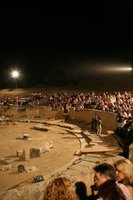Ancient Theatre
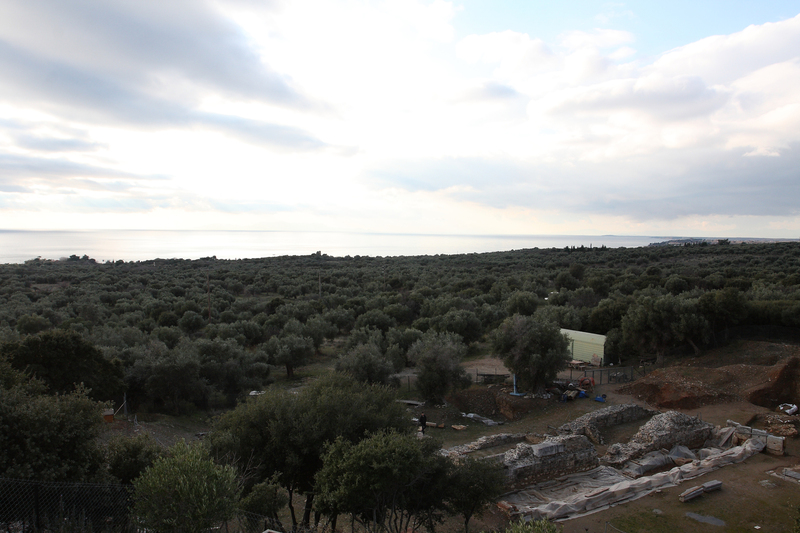

On the way to the Synaxis region, on the smooth slopes of the mountain Ismaros, at the location which is called Kabana, among dense olive groves, the ancient theater of Maronia has revealed. Visitors of the site could spot in the background the ancient port of the city – the aquatic way of commercial trade – while they gaze at the olive trees and the deep blue Aegean Sea.
In the theater, two different constructional and operational periods could get distinguished.
The first period is dated back either during the late 4th century BC or during the early 3rd century BC. Then there were built the stone concave, which was divided into nine bleachers, the U-shaped orchestra made of clay, but also one technical project: a built and closed pipe, which was located underneath the concave, with the aim to gather all the water coming from the mountain’s slopes and channel it outside the theater’s site.
The second constructional phase, is dated back to the Roman period, during the 1st century AD. Then a two-storey stage construction was built and the orchestra turned into an arena, while a shelter made of stone was added on the front row of seats in order to protect the spectators from the gladiatorial and animal fights. At the modern village of Maronia, in the shed of Tavaniotis’ mansion, there is, among others, the headstone of the gladiator Iklatoras which states the gladiator’s victories, (twenty in total, during his life time).
The Ancient Theatre could include 2,500-3,000 spectators. The current work on the site is related to the maintenance and restoration of the first three rows of seats but also three more rows will be added (in total, there are nine rows which have being identified). During previous centuries, a considerable amount of the constructional materials of the theater, was removed and transferred to the newest village of Maronia. As it was common in the past, all these ancient pieces and materials were reused in order for the school or the area to get built, and up to today, these ancient architectural pieces and carved stones are visible in the school.
Equally striking are the three honorary presidential thrones, which are allocated on the first raw of the seats, and are dated during the first construction phase of that Hellenistic period. The names of the local lords are written on them (TOPEIROS, SENATE, FLA POLYNIKOUS)
Considerable excavation work was done on the theatre in the period of 1981 to 1994, all this work was accomplished by the archaeologist Mr Evangelos Pentazos. During the year 2000, in collaboration with the department of Architecture of the Polytechnic School of the Aristotle University of Thessaloniki a small-scale excavation took place. According to a study which took place in 2007, and under the sponsorship of European programs, restoration and repair work began in order to restore the appearance of the theater as well as its main functions. This work is continuing up to today and has a great progress. The theater is under the auspices of the "Citizens' Movement for Ancient Theatres' named “frieze”
View of Ancient Theater in the year 2000.
View of Ancient Theater in 2008. Work considering the repair and the restoration of the grandstands of the theater has progressed significantly.
View of Ancient Theater in 2015. The grandstands as well as the largest part of the theater, have been restored.
As part of the restoration work, a reception area was formed and several informative signs were placed. During the year 2009 and after 2500 years, the first theatrical play was hosted in the theater, the play was an ancient Greek tragedy with the actress Lydia Koniordou in the role of Electra.


